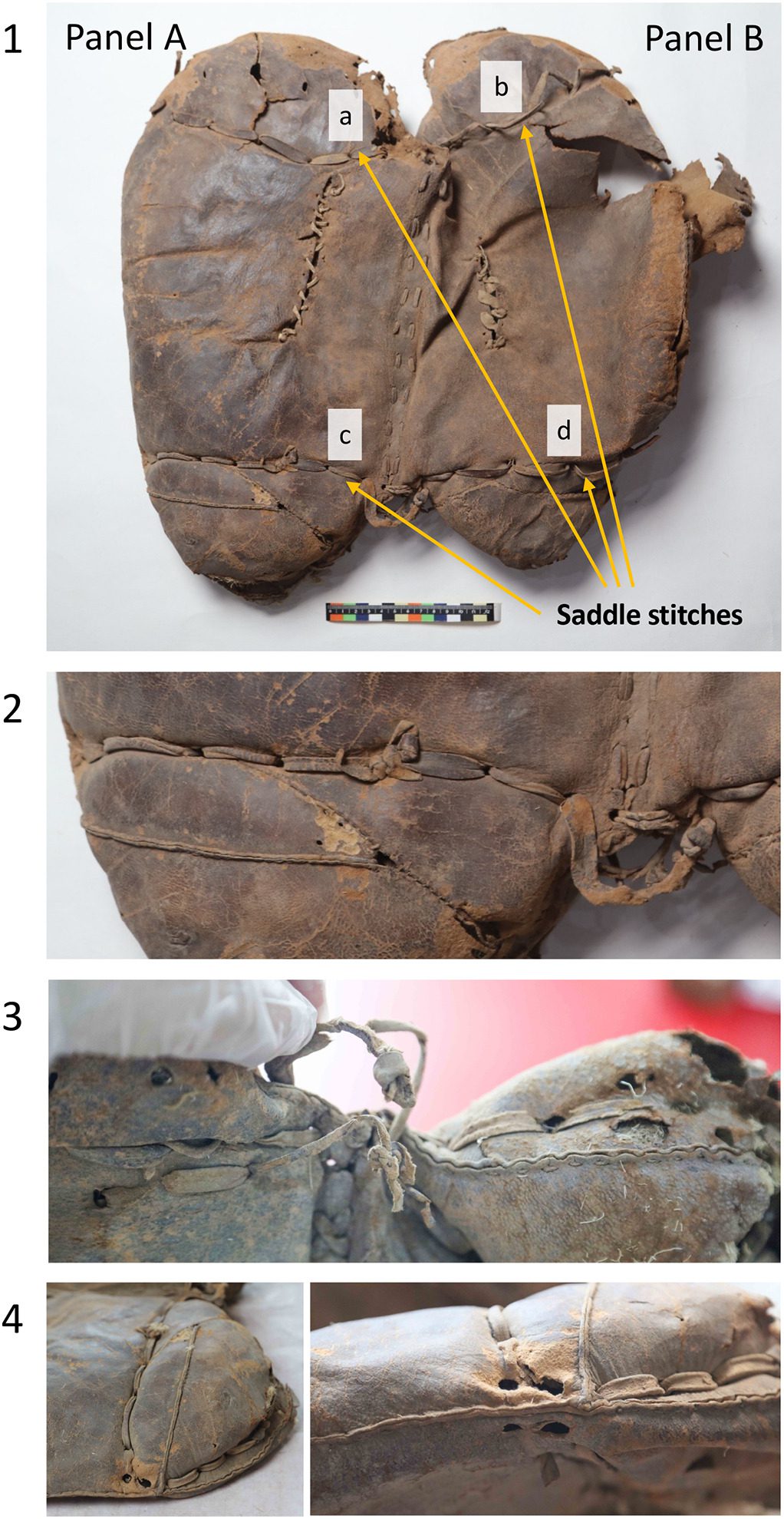Archaeologists working in the Xinjiang Uygur Autonomous Region of China have discovered what may well be the oldest known saddle for horse riding – and we’re betting its ancient owner isn’t who you’re expecting.
Made from cow leather and filled with a mix of straw and hair from deer and camels, the saddle was made between 727 and 396 BCE, according to radiocarbon dating – making it at least as old as the previous record-breaking saddles, and potentially much older.
Despite its age, though, it’s in surprisingly good condition, thanks to the arid heat of the northwestern Chinese desert where it was discovered. And what’s more, the researchers note, it’s clearly very well constructed – showing “practical and well-thought-out design, the fine execution of crafting techniques, in particular the leather- and needlework,” that betrays its creation by “skillful craftsmen familiar with leatherwork, horse husbandry, and riding.”

Some of the saddle’s intricate stitching has survived.
And perhaps even more remarkable – at least given how we often think about ancient cavalry and riding – is the rider: “Unlike […] younger finds from the elite Scythian burials, this early saddle was made from inexpensive materials and used by a common woman,” the researchers write.
Dressed in a hide coat, wool pants, and leather boots, the rider was buried with her saddle “placed on her buttocks as if she was seated on it,” the team note. And it clearly isn’t just for show: the saddle shows “[o]bvious traces of repair,” they write, showing that it was “intensively used and maintained” throughout its lifetime.
“This really shifts our ideas about who was riding horses,” University of Zurich biomolecular archaeologist Shevan Wilkin, who was not involved in the study, told Live Science. And yet our ancient cavalry woman was not alone: a number of other graves excavated at the site, including some mixed male and female burials and a handful of female-only ones, turned up horse riding accessories – strong evidence that the activity was not the exclusive domain of men.

The saddle (circled in red) in situ in the Yanghai cemetery tomb.
While horses have an extraordinarily long history of domestication by humans, the first few millennia of our shared existence mostly didn’t involve riding. Instead, horses were kept for meat and milk, with only a few pieces of evidence from Eastern Europe hinting at the animals’ use for personal transport.
By the early second millennium BCE, however, riding was definitely established across Eurasia: not only is this the period where we find the earliest evidence for light spoke-wheeled chariots, but, starting in Mesopotamia and gradually radiating out across Egypt and the Near East, we start to see horses with riders turning up in art as well.
None of those artifacts, though, include a saddle. “[A] Mesopotamian terracotta plaque dated to ca. 1750 BCE […] shows a rider with reins and a whip, but no saddle, instead a simple surcingle-like strap, i.e. a separate belly strap encircling the saddle and the thorax of the horse to stay in seat,” explain the researchers.
Similarly, “[a] horse without saddle-cloth controlled by a rider with bridle and whip is shown in the tomb of Egyptian pharaoh Horemheb,” who ruled between 1319 and 1292 BCE. Even in the Assyrian Empire, when cavalry started being used as a tactical force in warfare, the team note that “riders sat on fringed, carpet-like saddle-cloths or pads in the shape of animal skins fixed with breast straps and cruppers.”
“Numerous depictions on stone reliefs from the royal Assyrian palaces at Nimrud and Nineveh […] show that bridles were used, but not saddles,” they confirm.
While it may seem strange that it took so long to give up bareback riding, it’s understandable – at least for our rough-and-ready ancestors. “[T]he saddle was a relatively late development,” write the team, arriving only “when riders began to care more about comfort and safety and the health of the horses.”
Exactly when this happened is not known – in part because there’s usually very little physical evidence surviving after all this time. “Usually for something organic that’s this old, like leather, then we wouldn’t have any remnants of it, or very little,” Wilkin pointed out.
But if, as archaeologists suspect, it was around the mid-first millennium BCE, it would place the potentially 2,700-year-old new discovery right at the beginning of the history of the saddle – marking a turning point not just for the comfort of our butts, but for the spread of human civilizations and ideas as a whole.
“The invention of the saddle substantially improved horseback-riding,” the team write. “[It] not only revolutionized warfare, but also eased long-distance speedy movement across Eurasia.”
The study is published in Archaeological Research in Asia.
Source Link: 2,700-Year-Old Saddle Found In Ancient Chinese Tomb Is Oldest Ever Discovered